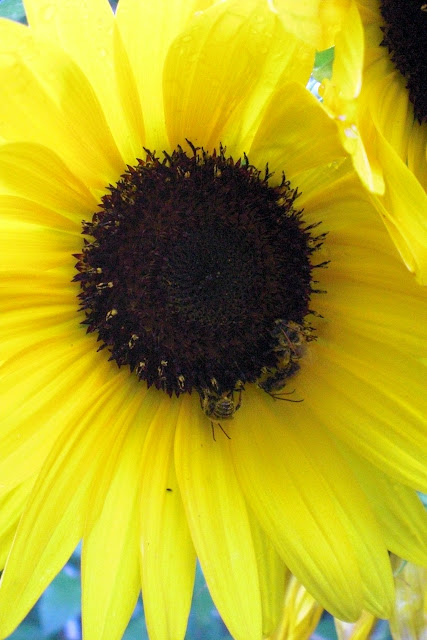This photo (above) was taken last year, but you can see how the box elder screened the neighboring building.
This photo (above) was taken recently. Hello neighbor. The dogwood will benefit from more sun and should top out at 10 ft., but it does lose its leaves come winter. Though once mature, it should have a thick network of branches. The blue spruce will also fill in this space once it matures. And I took this opportunity to plant another evergreen.
This Filicoides Fernspray Cypress will mature to 8-10' tall and 4' wide, a perfect size for this space. It is soft to the touch and really does remind me of ferns. Its foliage also has hints of blue that compliment the blue spruce nearby. But until it grows 10 ft tall ...
We decided to put up some curtains – a bamboo shade to screen those windows. It's attached directly to the existing chain link fence. Some volunteer Virginia Creeper is also benefiting from more light and is already growing through the bamboo screen, yippee! But the space still felt too open and exposed so I decided to make another rustic structure in keeping with the rustic theme of my garden. This time a freestanding trellis. It is sort of my tribute to the missing tree. I decided to make its walls resemble the structure of leaves. Again, my source for the branches is our local dump although some of these branches are from the box elder itself. Construction began in my shed, one of my favorite retreats. The trellis was put together with various lengths of drywall screws and a power drill. I began by making two "sides" sort of like a ladder, and then used branches to connect the sides together so that I had a square base that could stand on its own.
Here I am visualizing leaf shapes and adding veining.
Hours later I have my rustic leaf trellis.
Here it is in place as viewed from the new screened porch.
The leaf pattern on this pot repeats the leaf shapes on the new trellis.
The birds now have a new perch. This garden bed now has another layer between us and them. I have a Clematis Virginiana, a beautiful native clematis, on order that I will plant at the base of this trellis. Hopefully it will twine its way through the leaves.
A friend of mine gave me these beautiful garden ornaments. I thought I would hang them here to honor the trees – new and lost. What about you? Do you have an area of your garden where you would like to have more privacy? Consider making yourself a freestanding trellis or a tribute of some sort to your favorite or lost plant.























































